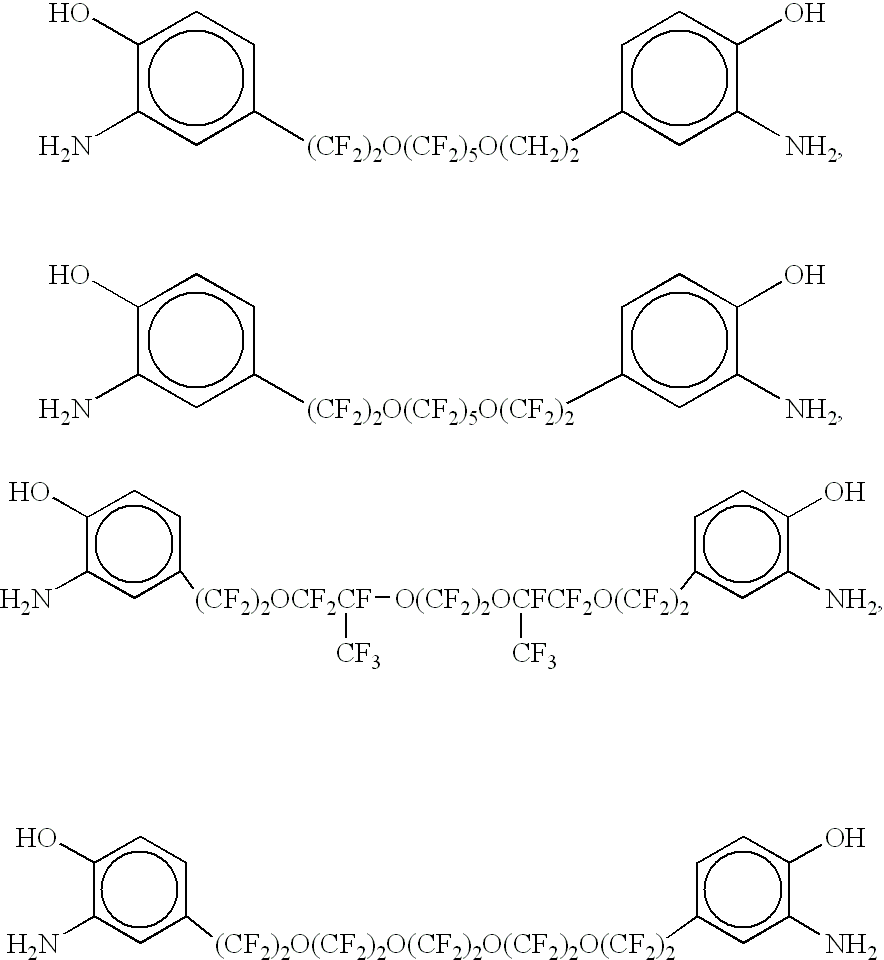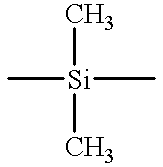Thermoresistance adhesive and semiconductor device using the same
a technology of adhesive and semiconductor, applied in semiconductor devices, solid-state devices, basic electric elements, etc., can solve the problems of reducing the rate of the sealer used in such devices, hardly being able to provide both secure bonding and film strength, and achieving the effect of sufficient adhesiveness
- Summary
- Abstract
- Description
- Claims
- Application Information
AI Technical Summary
Benefits of technology
Problems solved by technology
Method used
Image
Examples
example 2
To a 1,000 ml four-necked flask equipped with a stirrer, a thermometer, a nitrogen gas inlet pipe and a condenser provided with an oil / water separator, 65.69 g (0.16 mol) of BAPP, 143.22 g (0.40 mol) of bis(3,4-dicarboxylphenyl)sulfone dianhydride (hereinafter abbreviated to DSDA), 38.84 g (0.20 mol) of isophthalic acid dihydrazide (hereinafter abbreviated to IPDH), 9.93 g (0.04 mol) of 1,3-bis(aminopropyl)tetramethyldisiloxane and 478 g of BL were supplied while blowing nitrogen gas through the solution. After one-hour reaction at 50 to 60.degree. C. with stirring, the temperature was raised to 195.degree. C. and the reaction was continued at this temperature for 6 hours. Water generated in the course of the reaction was rapidly removed out of the reaction system. The resulting solution was diluted with BL to obtain a polyamide-imide resin solution with a resin concentration of 30% by weight.
To a 1,000-ml four-necked flask equipped with a stirrer, a thermometer, a nitrogen gas inle...
example 3
To a 1,000-ml four-necked flask equipped with a stirrer, a thermometer, a nitrogen gas inlet pipe and a condenser with an oil / water separator, 102.64 g (0.25 mol) of BAPP, 127.83 g (0.357 mol) of DSDA, 23.13 g (0.107 mol) of 2,2-bis(4-hydroxy-3-aminophenyl)propane (hereinafter abbreviated to HAB) and 380 g of N-methylpyrrolidone (hereinafter abbreviated to NMP) were supplied while blowing nitrogen gas through the solution. After one-hour reaction at 50 to 60.degree. C. with stirring, the temperature was raised to 195.degree. C. and the reaction was continued at this temperature for 5 hours. Water generated in the course of the reaction was rapidly removed out of the reaction system. The resulting solution was diluted with NMP to obtain a polyimide resin solution with a resin concentration of 40% by weight.
To 200 g of this polyimide resin solution was added 8 g of .gamma.-glycidoxypropyltrimethoxysilane (hereinafter abbreviated to GPS), followed by mixing well at room temperature to ...
example 4
To a 1,000-ml four-necked flask equipped with a stirrer, a thermometer, a nitrogen gas inlet pipe and a condenser provided with an oil / water separator, 89.09 g (0.217 mol) of BAPP, 119.59 g (0.334 mol) of DSDA, 42.85 g (0,117 mol) of 2,2-bis(4-hydroxy-3-aminophenyl)hexafluoropropane (hereinafter abbreviated to HAB-6F) and 377 g of BL were supplied while blowing nitrogen gas through the solution. After one-hour reaction at 50 to 60.degree. C. with stirring, the temperature was raised to 195.degree. C. and the reaction was continued at this temperature for 5 hours. Water generated in the course of the reaction was rapidly removed out of the reaction system. The resulting solution was diluted with BL to obtain a polyimide resin solution with a resin concentration of 40% by weight.
To a 1,000-ml four-necked flask equipped with a stirrer, a thermometer, a nitrogen gas inlet pipe and a condenser, 400 g of the solvent-containing solid polyimide resin for filler obtained in Example 2 (resin ...
PUM
| Property | Measurement | Unit |
|---|---|---|
| size | aaaaa | aaaaa |
| temperature | aaaaa | aaaaa |
| temperature | aaaaa | aaaaa |
Abstract
Description
Claims
Application Information
 Login to View More
Login to View More - R&D
- Intellectual Property
- Life Sciences
- Materials
- Tech Scout
- Unparalleled Data Quality
- Higher Quality Content
- 60% Fewer Hallucinations
Browse by: Latest US Patents, China's latest patents, Technical Efficacy Thesaurus, Application Domain, Technology Topic, Popular Technical Reports.
© 2025 PatSnap. All rights reserved.Legal|Privacy policy|Modern Slavery Act Transparency Statement|Sitemap|About US| Contact US: help@patsnap.com



